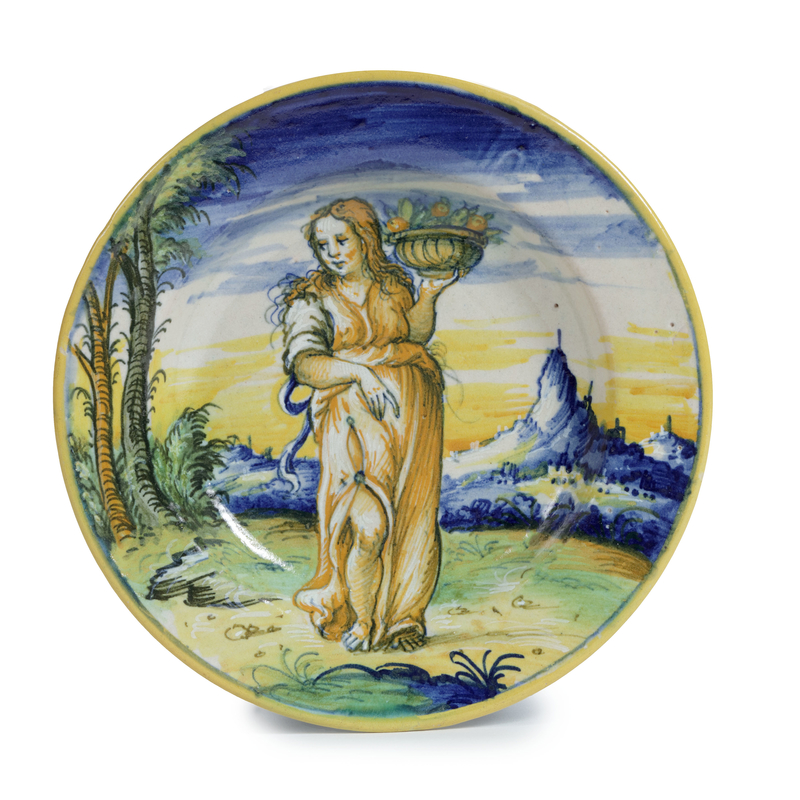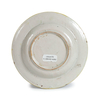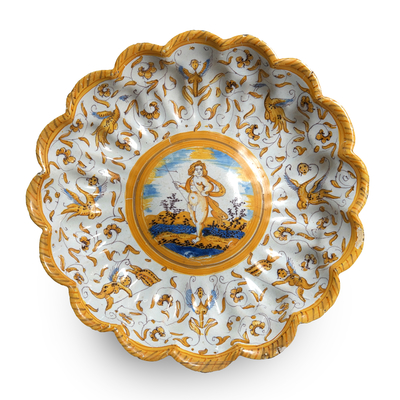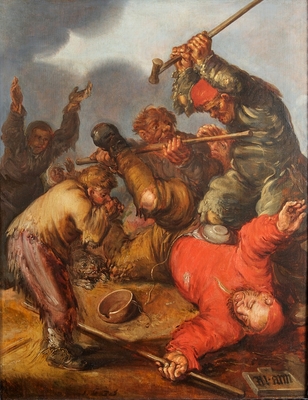Italian maiolica dish with Ceres
Global shipping available
- Origin
- Venice, Italy
- Period
- C. 1560-1570
- Material
- Maiolica
- Diameter
- 21 cm
Questions about this object?
Please use one of the contact options below:
Description
This colourful maiolica dish is decorated with a depiction of Ceres, the Roman goddess of grain and agriculture. She stands in a hillside landscape with two trees on the left and carries a basket with fruit and flowers. In Roman mythology, Ceres ensured the growth of crops, and later the cult of Ceres was merged with that of the Greek goddess Demeter.
The dish is made of maiolica: refined earthenware with an opaque white tin-glaze, decorated with brightly coloured images and shapes. The tin glaze becomes white due to the presence of tin oxide, a powdery white ash. On the lower edge of this dish, the red earthenware is visible through the white glaze. Maiolica was an expensive product because of its method of production, tin was a pricey substance, and great care was taken in shaping and decorating the pottery. The technique originated in Islamic Spain. Before the beginning of the 16th century, important Italian centres were Naples, Pesaro, Faenza, Rome and Deruta. From the sixteenth century onwards, remarkable maiolica objects were produced in Forlì, Cafaggiolo, Castel Durante, Rome, Urbino and Venice, as well as in various places in Sicily. The decorations on the maiolica were often inspired by the realistic etchings, prints and paintings of Italian and German Renaissance painters, such as Raphael and Dürer, or were made to order according to the client's wishes. Recurring motifs are narrative scenes from the Bible, classical mythology and history, in line with the Renaissance spirit.







